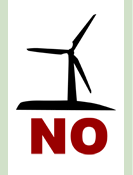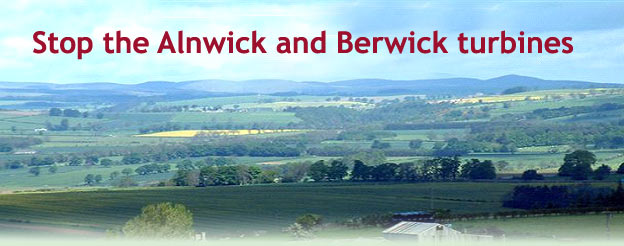|
- The intermittency problem
Turbines only work when the wind blows. If it blows too hard, they have to be shut down.
You can't predict when the wind is going to blow, how hard it will blow or for how long. So you won't know when the turbines will produce electricity.
In fact, wind is one of the least reliable sources of energy.
And we can't yet economically store the electricity that giant wind turbines produce.
This means that conventional power stations have to be kept running to provide a back up. Not a single power station will close , no matter how many wind turbines we have.
- The carbon dioxide problem
- The Council for Science and Technology
- Innogy / Institute of Mechanical Engineers
- E.ON, the world's largest private sector energy services company
They all say that using wind energy either adds to the carbon problem or has little or no effect on it.
This is because of the effect that using wind energy has on fossil fuel power stations, which are kept running to make electricity when the wind isn't blowing.
In May 2005, the Council for Science and Technology, chaired by the Government's Chief Scientific Adviser, said,
"...it is not possible to meet the challenging CO2 objectives ... without large-scale technologies which do not add to the carbon burden."
Council for Science & Technology
In a keynote address to the Institute of Mechanical Engineers in 2003, Innogy, which owns npower renewables, said,
"...it has been estimated that the entire benefit of reduced emissions from the renewables programme has been negated by the increased emissions from part loaded plant..."
E.ON, which owns Powergen and operates more wind turbines in Europe than anyone else, says,
"The characteristics of wind make it necessary for shadow power stations to cover over 80% of wind energy capacity."
E.ON
The inefficiency of this means that E.ON save less than 1% of the gas their power stations used to use.
- Additionally
In February 2005, The Oxford Institute for Energy Studies wrote,
"Renewables, even on the most optimistic assumptions, will only have a minor impact, despite their prominence in the public debate."
Oxford Institute
And even the DTI, which backs wind energy, admits that using more wind energy will cause "a slight increase in emissions."
- The efficiency problem
UK wind turbines ran at just 26.6% of their capacity in 2004. Source; DTI Digest of United Kingdom Energy Statistics
- The grid connection problem
If they were producing electricity just for local use, then wind turbines might make some sort of sense.
All energy is most efficiently used "at source" - where it is created.
Any attempt simply to "plug in" renewable energy to the national grid can only add to the 5 billion kilowatt hours of electricity lost during transmission.
Moreover, our neighbours in Scotland find themselves in a tricky position.
Having rushed to cover Scotland in wind turbines, they're now on track to produce three times more electricity than they use.
But they can't export the surplus to England because there isn't enough capacity in the ugly overhead cable that runs through Northumberland.
So what's the point in us adding to the problem?
- Wind isn't working
Wind isn't working in Denmark or Germany, and they generate more electricity there than anywhere else on earth. Let's learn from them.
Giant turbines will never have a place amongst the heritage coastline, historic castles and unspoilt landscape of the North East. |

